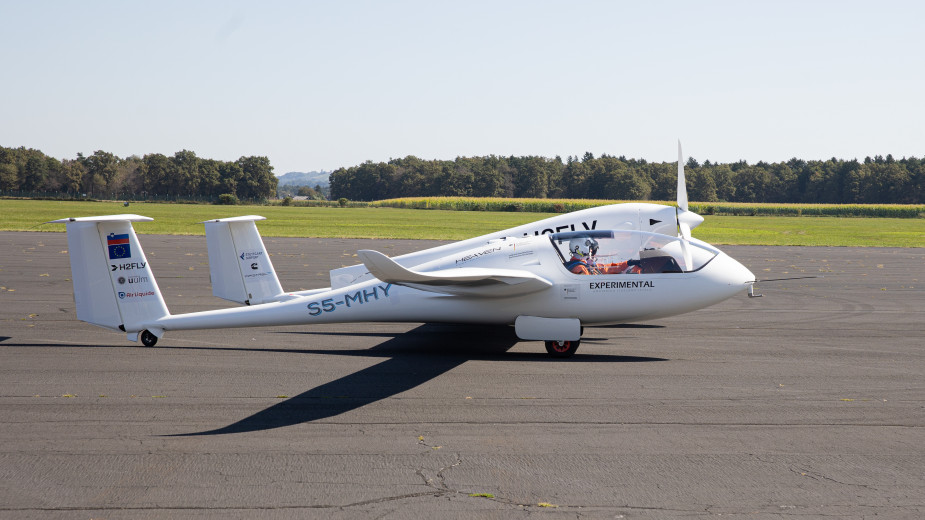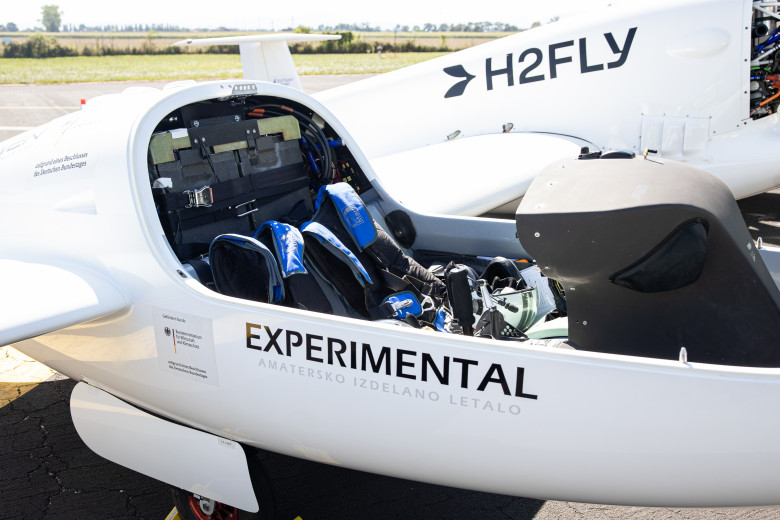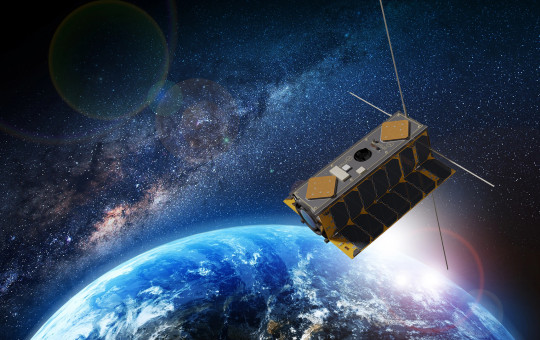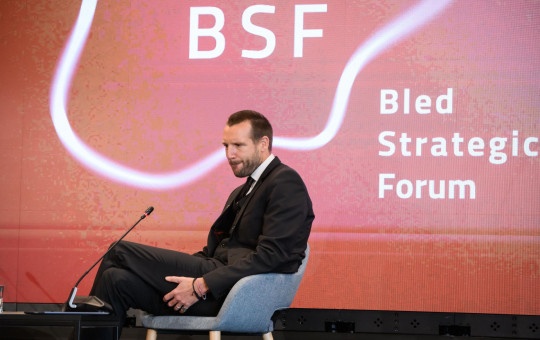Date: 11. September 2023
Time to read: 3 min
German company H2Fly, in cooperation with its partners Pipistrel and Air Liquide, is the first company in the world to fly a four-seater aircraft powered by liquid hydrogen and crew at Maribor Airport. As Josef Kallo, the company's first president, said at the time, this milestone marks a pioneering step towards zero-emission aviation.
Up to 2,000 kilometres in the future
In Maribor, the Heaven partners presented the results of four years of work to prove that fuel cells and a liquid hydrogen storage system can be used to power an electric aircraft engine.
"The findings of this project have brought us to the point where we can realistically consider this type of propulsion for a 40-seater aircraft and what costs we can expect. For this we need to build a one megawatt electro-fuel cell, which will allow us to fly up to 2,000 kilometres in the future," Kallo explained the importance of the event.
The hydrogen-powered aircraft had already been flown in 2016, but then without a liquid hydrogen tank, which only allowed them to fly up to 700 kilometres. With the new technology developed by Air Liquide, they can now boast a range of 1,500 kilometres, and in the next stage they will extend the range by another 500 kilometres.
Hydrogen's huge potential on the road to a carbon-free future for the aviation sector
"We have also done a longer test, extending the existing record of two hours of flight time from 2020 to three hours of continuous flight time," said the first man of the company, whose plans have received financial backing from private investors as well as from the German government and European funds, and a significant contribution from the University of Ulm, where he is the head of the Institute for Energy Transformation.
As he explained, the aim is to develop the aforementioned upgraded system of more than one megawatt over the next four years, after which it will take some time to obtain all the certificates. The first commercial flight of a 40-seater aircraft will have to wait until at least 2029 or 2030, he said, and he sees the opportunity mainly in short-haul routes in the European market.
As liquid hydrogen could still have some environmental downsides, especially as it requires more energy to produce than it provides, Kallo replies that in their case they are using green hydrogen. They have so far invested between four and five million euros in the project, and now plan to invest at least five times that amount for further development.
According to Air Liquide's Innovation Director Pierre Crespi, the company also strongly believes in the potential of hydrogen to lead the aviation sector to a carbon-free future and has joined the project with great expectations.
-
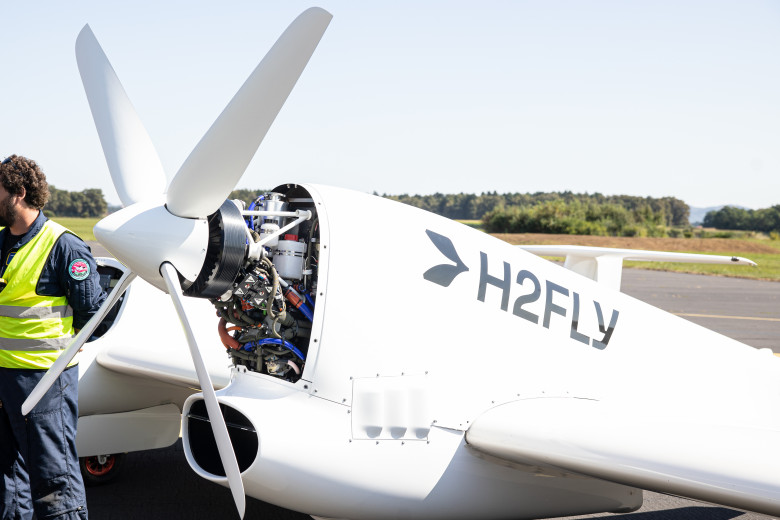 The project has so far invested between four and five million euros, but now plans to invest at least five times that amount for further development. Photo: Katja Kodba/STA
The project has so far invested between four and five million euros, but now plans to invest at least five times that amount for further development. Photo: Katja Kodba/STA
-
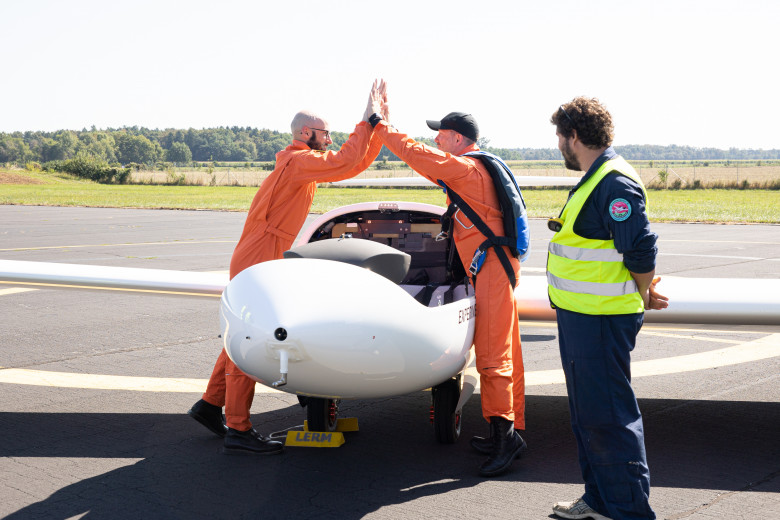 With the innovation developed by Air Liquide, they can now boast a range of 1,500 kilometers, and in the next stage, they will extend the capabilities by an additional 500 kilometers. Photo: Katja Kodba/STA
With the innovation developed by Air Liquide, they can now boast a range of 1,500 kilometers, and in the next stage, they will extend the capabilities by an additional 500 kilometers. Photo: Katja Kodba/STA
The biggest difference - much quieter flying
As part of the project, Pipistrel has adapted the airframe to integrate the liquid hydrogen tank and related systems, managed the process of obtaining a permit to conduct test flights on the test aircraft from the Slovenian Civil Aviation Authority, and organised the test flight.
As explained by Pipistrel's Test Manager Marco Rizzato, they are also in charge of the monitoring and interpretation of the data obtained during the tests, both on the ground and on the test flight, and will analyse the results and integrate them into studies on the possibility of upgrading the developed liquid hydrogen powertrain for use on larger aircraft.
"We have long been involved in the development of electric aviation and liquid hydrogen as an energy source certainly has great potential, so it is very important for us to be part of this project," added Mr Rizzato.
The first official test flight was carried out by German pilot Johannes Anton Garbino and his Polish colleague Pawel Adamczuk. They said that the biggest difference with conventional aircraft is the much quieter flying experience.
Source: STA

